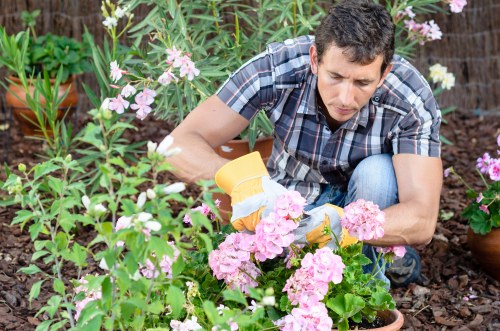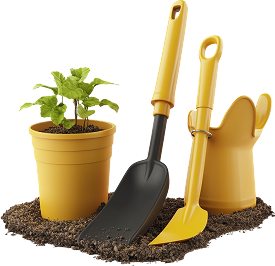Mastering Hedge Trimming in London Gardens

Introduction to Hedge Trimming
Hedge trimming is an essential aspect of gardening in London. Whether you have a classic English garden or a modern urban green space, maintaining your hedges not only enhances the beauty of your property but also promotes the health and longevity of the plants.
In a bustling city like London, where space is often at a premium, well-maintained hedges can provide privacy, define spaces, and contribute to the overall aesthetic appeal of your home.
This comprehensive guide will explore the best practices, tools, and techniques for effective hedge trimming in London gardens.

Why Regular Hedge Trimming is Important
Regular hedge trimming offers numerous benefits that go beyond mere aesthetics. Here are some key reasons why maintaining your hedges is crucial:
- Healthier Plants: Trimming removes dead or diseased branches, allowing the plant to focus its energy on healthy growth.
- Controlled Growth: Regular maintenance prevents hedges from becoming overgrown and unruly.
- Enhanced Appearance: Well-trimmed hedges contribute to a neat and orderly garden, increasing the overall curb appeal of your property.
In London’s variable climate, with its mix of rain and sunshine, consistent trimming ensures that your hedges remain resilient and vibrant throughout the year.

Choosing the Right Tools for Hedge Trimming
Having the appropriate tools is essential for efficient and effective hedge trimming. Here are some essential tools you should consider:
- Pruning Shears: Ideal for small branches and precise cuts.
- Hedge Trimmers: Available in manual or electric versions, these are perfect for larger hedges.
- Loppers: For thicker branches that are too large for shears.
- Protective Gear: Gloves, safety glasses, and ear protection to ensure safety during trimming.
Investing in quality tools can make the hedge trimming process more manageable and result in a better-finished appearance.

Best Practices for Trimming Hedges
To achieve professional-looking results, follow these best practices:
- Timing: The best times to trim are during the late spring or early summer. Avoid trimming in extreme weather conditions.
- Technique: Trim in a consistent shape, whether you're aiming for a formal or natural look.
- Maintenance: Regular, light trims are better than infrequent, heavy cuts.
- Clean Cuts: Make sure your tools are sharp to ensure clean cuts that heal quickly.
Adhering to these practices not only improves the appearance of your hedges but also contributes to their overall health.

Common Mistakes to Avoid
Even experienced gardeners can make mistakes during hedge trimming. Here are some common pitfalls and how to avoid them:
- Over-Trimming: Cutting too much can stress the plant. Always trim gradually.
- Ignoring Plant Health: Ensure you’re not trimming away healthy growth that contributes to the plant’s vitality.
- Using Dull Tools: Dull tools can cause jagged cuts, leading to potential infections.
- Neglecting Regular Maintenance: Inconsistent trimming can lead to overgrown hedges that are harder to manage.
By being mindful of these mistakes, you can maintain the beauty and health of your hedges more effectively.
Professional Hedge Trimming Services in London
If hedge trimming seems daunting, consider hiring a professional service. Professionals bring expertise, the right tools, and the experience needed to ensure your hedges are perfectly maintained.
London boasts a range of gardening services specializing in hedge trimming. They can tailor their approach to match your garden’s specific needs, ensuring optimal results.
Contact us today to schedule a consultation and transform your garden with expertly trimmed hedges.
Environmental Considerations
When trimming hedges, it's important to consider the environmental impact. Sustainable practices not only benefit your garden but also the broader ecosystem.
Opt for electric or battery-powered trimmers to reduce carbon emissions. Additionally, recycle the clippings or use them as compost to enrich your soil.
Implementing eco-friendly trimming practices helps maintain a healthy garden and supports London’s green initiatives.
Seasonal Hedge Trimming Tips
Different seasons require different trimming approaches to ensure your hedges remain healthy year-round.
- Spring: Focus on removing winter damage and shaping new growth.
- Summer: Maintain shape and control growth during peak growing seasons.
- Autumn: Prepare hedges for winter by cutting back any overgrowth.
- Winter: Minimal trimming is recommended to avoid stressing the plants.
Adapting your trimming schedule to the seasons helps maintain the vitality and appearance of your hedges.
Choosing the Right Plants for Your Hedges
Selecting suitable plants for your hedges is fundamental to easy maintenance and a beautiful garden.
Consider species that thrive in London’s climate and require the level of care you can provide. Popular choices include:
- Boxwood: Ideal for formal hedges with their dense, evergreen foliage.
- Privet: Fast-growing and versatile, suitable for both formal and informal gardens.
- Laurel: Offers large, glossy leaves and is excellent for privacy screens.
- Holly: Adds color and texture, with the added benefit of berries in winter.
Choosing the right plants ensures your hedge remains attractive and manageable with regular trimming.
Innovative Trimming Techniques
Modern gardening offers various innovative trimming techniques to enhance the aesthetic appeal of your hedges.
- Topiary: Sculpting hedges into artistic shapes and forms.
- Natural Shaping: Allowing hedges to grow more organically for a relaxed look.
- Layered Hedges: Combining different heights and species for depth and interest.
Experimenting with these techniques can add unique character to your garden, making your hedges a focal point of your outdoor space.
Maintaining Hedge Health
Healthy hedges require more than just trimming. Proper maintenance includes watering, fertilizing, and pest control.
Ensure your hedges receive adequate water, especially during dry spells. Apply appropriate fertilizers to promote robust growth and use eco-friendly pest control methods to protect your plants from infestations.
Regular maintenance contributes to the long-term health and beauty of your hedges, making future trimming easier and more effective.
DIY vs. Professional Trimming
Deciding between trimming your hedges yourself or hiring a professional depends on several factors.
- Time and Effort: DIY trimming can be time-consuming, especially for larger hedges.
- Expertise: Professionals have the skills to achieve precise and aesthetically pleasing results.
- Cost: While DIY is cost-effective, professional services can save time and ensure quality.
Evaluate your garden’s needs and your personal capabilities to decide the best approach for your hedge trimming.
Conclusion
Effective hedge trimming is a cornerstone of London gardening. By understanding the importance, employing the right tools and techniques, and considering professional services when needed, you can maintain beautiful and healthy hedges that enhance your garden’s appeal.
Remember to implement sustainable practices and adapt your trimming schedule to the seasons to ensure your hedges thrive year-round.
Book your service now to give your garden the expert care it deserves.
